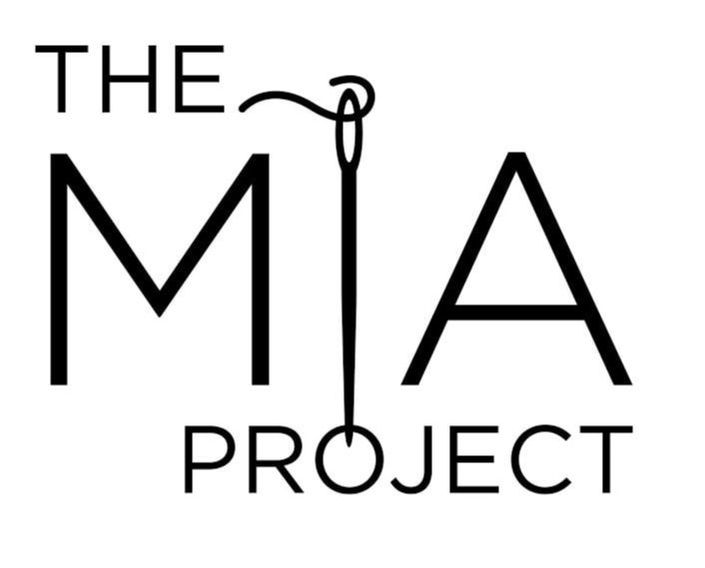|
Here I am writing another post about darts... My obsession aside, the importance of darts in dressmaking is essential to grasp both as a sewing beginner as well as an advanced dress and pattern maker. While my previous tutorials focused on understanding the structure of darts and how to sew them, today's post will shift its attention to dart logistics. Perhaps, it will answer some questions you've often asked yourself in your own sewing process. I'll walk you through all the concepts below, but if you landed on this page desperately looking for a detailed tutorial on transferring and sewing darts, check out this oldie but goodie: Everything You Need To Know About Darts In Sewing. The video tutorial above should give you a better visual on how to correctly pin and sew single pointed darts which go hand-in-hand with some of the concepts discussed below. The Importance Of Darts In Garment ConstructionTo understand darts at their core, you have to understand why they are so essential in garment construction. A dart works to convert fabric from flat to 3-dimensional. While darts are very simple triangle-like shapes, the architecture relies on the dart vanishing point- the point where both dart legs and the middle fold line meet. Check out the image below for some visual clarity on these three elements. So how does such a simple shape mold to the human form? Dart points radiate to some of the highest points on the body. They take in the excess that extends to these points gradually and smoothly. Darts are conventionally added the curviest areas of the body. Naturally, that is the bust, waist and hip areas. The dart's widest part always corresponds to the slimmest portion on the body, while the vanishing point blends into the wider areas. The best example of this concept of course are bust and front waist darts which regardless of how they are positioned on the bodice, will always have vanishing points radiating to the apex- the highest point on the bust. Keeping this logic in mind, you can shift the dart excess anywhere on the bodice as long as this point of gravity remains the same. Side note: this rule is perhaps the most basic yet widely used in pattern drafting. Following that same logic, back darts, whether single pointed or double pointed (contour darts), gravitate to the highest points on the upper back. Below the waistline, dart vanishing points are aligned with the widest/highest areas of the hip. In the back, dart vanishing points will blend into the highest point on the bottom. Following a very simple concept, darts are able to adapt to the organic shape of the human form, adjusting to any body type and size in a very simple fashion. In the design and pattern drafting process, darts are also important landmarks for moving excess around. For example, a basic blouse pattern with darts can be easily converted to princess style by re-directing the dart’s excess to the seams. If darts aren’t present, you wouldn’t know exactly how much excess needs to be taken out at each princess seam. That being said, they are an essential part of basic blocks which are simple sewing patterns used for generating new patterns in a variety of styles and sizes.
2 Comments
Although I've done a set in sleeve tutorial before, this one is going to be a little different. In this week's video, I'll show you not only how to sew a basic jacket sleeve but also how to add lining to the sleeves individually, when the rest of the jacket is left unlined. Partially lining a garment can pose some technical challenges but will always result in a higher quality finish. Speaking of challenges, sleeves are one of those elements that can be a bit intimidating especially when they need to be lined. As you go through the process described below, take each step one at a time and you'll love the end result! So why not add full lining to the jacket? Wouldn't it be easier? The answer is yes. Full lining is basically the mirror image of the self garment and often times, does not require additional sewing patterns to be drafted. It is also undeniably easier to sew since you don't have to clean finish any of the seam raw edges individually as it self finishes on its own. There are however, many instances when full lining simply may not work due to a multitude of design and construction requirements. Examples of such situations include: - The overall garment will be too bulky if lining is added - The lining will affect the overall drape of the garment (if you are sewing a flowy blouse or dress, for instance) - In case of sewing a more casual style (lining usually adds a more formal, finished effect). In cases as such, adding lining to only the necessary portions of a garment is usually your best bet. Here are some instances when partial lining (as opposed to full lining) is ideal for finishing a garment: - Only a portion of the garment cannot be clean finished by any other means but lining. - A portion of a garment uses fabric that has a wrong side not suitable or comfortable enough to touch bare skin. - You need added thickness and coverage in certain areas but not others. For example, you may be using a thin or light color fabric and need an added layer at the bottom of a skirt or dress. - A garment's edge is too thick to be stitched when folded. In this case, lining it may provide the best finishing technique. - For design purposes. For example, a portion of the garment should not have any visible top stitching on its right side in which case, partial lining will provide the prefect clean finishing method. As one of my favorite looks of all time, this box pleat skirt is every bit the playful yet classic cut you want in a silhouette. From a technical stand point, drafting its sewing patterns form scratch is moderately simple yet a little more time consuming (proof in the duration of the sewalong video below). The steps below will walk you through the complete process of sewing a full, box pleat skirt with invisible side zipper and side seam pocket, from drafting all sewing patterns (from scratch) to cutting, marking and sewing the final skirt! Side note: This tutorial will emphasize the importance of using notches as they provide one of the most essential markers for matching pleats and pockets in the sewing process. Drafting The Box Pleat Skirt PatternsWhen I draft sewing patterns from scratch, I always work from a set of basic dress patterns (also called blocks) fitted perfectly to my size. If you choose to do the same, never work on your original basic patterns. Always trace a copy to a separate piece of paper that you can then completely alter into the new design. Doing so not only allows for re-usability but also takes the pressure off making mistakes! If you take a difficult-to-fix wrong turn, you can always retrace the basic dress patterns and start the process all over. My dress patterns are cut on fold style with single pointed bust darts on the front and double pointed (contour) waist darts at the front and back. This style is as simple as you can get in terms of a non-stretch, basic fitted dress. For this skirt tutorial, I separated the bottom portion of each front and back dress pattern and used it as a blue print for drafting my box pleat skirt. The Waistband Patterns Before you start altering the body of the skirt pattern, use the original waistline to draft the waistband patterns first. It is a lot more difficult to draft the waistband once the pleats have alreday been added to the skirt's waistline as you would have to keep the pleats folded as you draft. No need to complicate things! Get the waistband patterns out of the way first.
You can view the full tutorial of drafting this particular waistband pattern here: How To Draft A Sewing Pattern For A Non-Stretch Skirt Waistband (Faced Style) To give you a more succinct breakdown, here are some of the main steps in the process: If you've ever sewn a garment from start to finish, you most likely know of that one or multiple elements in the process that once sewn, make everything instantly come together! For me, that special moment happens when either completing the zipper, attaching both sleeves or sewing in the waistband. When sewing bottoms, the waistband is often that single component that keeps everything together, binding the rest of the design elements into a finished product. In this tutorial, I will be using a simple yet classic technique to sew a waistband to the box pleat skirt I've been working on in this recent sewalong. Attaching this particular woven waistband is especially rewarding as it provides structure and support to the deep pleating along the skirt's waistline. Needless to say, a classic waistband (like the one in this tutorial) will keep all the folds aligned properly while also visually enhancing the skirt's fullness. When adding a waistband to an edge that houses pleats or gathers, it is always a good idea to first reinforce the folds or gathers with an additional stitch so that they don't stretch or come undone during the rest of the sewing process. Although waistband construction techniques vary based on style, fabric and design, reinforcing the garment's edge is one of those rules that needs to be followed regardless.
My skirt will have a basic two piece (faced) waistband that is non-stretch (woven). The design also calls for an invisible zipper sewn into the side seam which as you'll see below, will dictate the sequence of steps for sewing this particular band. That being said, if you follow the steps in order, you should not run into any major issues. If you're anything like me, you will find the process fairly enjoyable! I love on-seam pockets so much that I could sew one with my eyes closed. Simple, yet extremely functional, on-seam or in-seam pockets (whatever you want to call them) work with almost all garments without altering them aesthetically. As you'll see below, they are also very simple to sew and will elevate just about any design. I like to add my own spin on it by making the pocket bag a contrasting color or print. It's a great way to add character and a pop of color to the garment without overwhelming it! On-seam pockets are composed of two parts: the underlayer, which is sewn to the front piece of the garment, and an identical layer sewn to the back garment piece. When put together, the two layers form the pocket bag. Conventionally, these two pieces are identical in shape and are the mirror copies of each other. This facilitates the process of cutting and matching them to each seam edge. The easiest way to draft a sewing pattern for an on-seam pocket is to use your garment's front pattern piece as a guide. Using the seam that the pocket will be sewn into, sketch out the shape of the pocket bag. Mark all the appropriate notches for matching and sewing the pocket pieces later. For a full tutorial on drafting this skirt pocket pattern, check out this tutorial: How To Make A Sewing Pattern For A Skirt On-Seam Pocket. Seeing the pocket pattern being drafted should hopefully help you visualize how each piece fits into the finished clothing item.
For the past few weeks, you've seen glimpses of this lined crop top go through some of its development stages. From a simple sketch to the more complicated sewing process in between, this blouse's construction progressed with minimal hiccups along the way. When all is said and done, it is so rewarding to see everything come together into a garment that fits and functions exactly as I envisioned it. I can certainly attest to that as I got the chance to wear the blouse (paired with a matching skirt to come soon!) at this year's Heart To Heart Gala. As you go through the video sewalong and the steps below, you'll be able to access related tutorials that give you a detailed look at each process and sewing technique. Designing And Sketching The BlouseIt all started with a sketch. Or rather, two yards of fabric I came across at the fabric store while browsing for something completely unrelated. I didn't have the design in mind at the time but this blue-gold abstract print reminded me of my undying love for classically full, structured skirts of which you'll see more in the skirt sewing tutorials to come. The medium weight nature of this fabric provided the perfect canvas for finally taking on the project. For the design development and sketching video, check out: The Start Of A Sewalong- Sketching And Conceptualizing A Two Piece Cocktail Dress.
|
The Blog:A journey into our design process, sewing tutorials, fashion tips, and all the inspiring people and things we love. Doina AlexeiDesigner by trade and dressmaker at heart. I spend most of my days obsessing over new fabrics and daydreaming new ideas. Sadie
Executive Assistant & Client Relations Manager Archives
November 2019
Categories
All
|
-
Sewing Tutorials
-
Basics
>
- Aligning Pattern Grainlines To Fabric
- Preparing Fabrics For Sewing
- Pinning Sewing Patterns To Fabric
- Placing Sewing Patterns On Fabric For Cutting
- Rotary Cutters or Fabric Scissors?
- Cutting The Sewing Patterns
- What Are Notches And How To Use Them In The Sewing Process
- Transferring Notches From Pattern To Fabric
- Transferring Seamlines to Fabric
- Staystitching
- Backstitching: A Complete Guide
- Hand Basting: A Complete Guide
- Sewing Continuous Bias Binding
- Darts >
-
Sewing Seams
>
- The Basics Of Seams And Seam Allowance
- How To Sew A Straight Seam
- Sewing Curved Seams
- Sewing Corner Seams
- Trimming And Grading Seam Excess
- Notching/Clipping Seam Allowance for Tension Release
- Sewing Topstitched Seams
- Sewing Corded Seams
- Sewing A Slot Seam
- Sewing A Gathered Seam
- Sewing Bias Seams
- Sewing Seams With Ease
- Sewing Seams With Crossing Seamlines
- Sewing Unlike Fabric Seams
- How To Iron Seams: Ironing Tools And Conventions
- Sewing With Knit Fabrics
- Understanding Stitch Length And Tension
- Sewing Unique Fabric Seams
-
Seam Finishes
>
- Seam Finishing Techniques - Overview
- Applying A Pinked Seam Finish
- Applying A Bias Bound Seam Finish
- Serging And Zigzag Seam Finishes
- Sewing A Self-Bound Seam Finish
- Sewing A French Seam Finish
- Sewing A Hong Kong Seam Finish
- Sewing A Mock French Seam Finish
- Sewing A Turned-and-Stitched Seam Finish
- Sewing Overcast Hand-Applied Seam Finishes
- Sewing A Flat Felled Seam
- Sewing A Hairline Seam Finish
-
Hem Finishes
>
- Garment Hem Finishes: Overview
- Sewing A Double Fold Hem Finish
- Sewing A Single Fold Hem Finish
- Sewing Bound Hem Finishes
- Sewing An Exposed Double Layer Bound Hem
- Sewing A Folded-Up Bound Hem with Pre-folded Binding
- Sewing A Hong Kong Hem Finish
- Sewing A Band Hem Finish
- Sewing A Bias Faced Hem Finish
- Sewing A Twill Tape Hem Finish
- Sewing A Rolled Hem Finish
- Sewing A Shaped Hem Facing
- Using Fusible Hem Tape And Webbing
- Finishing A Lace Fabric Hem
- Finishing A Leather Hem
- Sewing Faced Hem Corners
- How To Finish Lining At The Hem
- Finishing Fabric Corners by Mitering >
- Interfacing A Hemline: Lined And Unlined Examples
-
Sewing Pockets
>
- Curved Patch Pocket With Flap
- Unlined Square Patch Pockets
- Lined Patch Pockets: Two Ways
- Extension On-Seam Pockets
- Separate On-Seam Pocket
- Front Hip Pockets
- Bound Double Welt Pocket
- Double Welt Pocket With Flap
- Self-Welt Pocket (Using Single Fabric Layer)
- Slanted Welt Pocket (Hand-Stitched)
- Faced Slash Pockets: Overview >
-
Sewing Zippers
>
- Sewing Zippers: General Information
- Sewing A Centered Zipper
- Sewing A Lapped Zipper
- Sewing An Invisible Zipper
- Sewing A Fly Front Zipper
- Sewing A Closed-End Exposed Zipper (No Seam)
- Sewing An Exposed Separating Zipper
- Sewing Hand Stitched Zipper Applications
- Sewing A Zipper Underlay
- Sewing A Placket-Enclosed Separating Zipper
- Sleeveless Finishes >
-
Neckline Finishes
>
- Sewing A Neck Shaped Facing
- Sewing An All-In-One Neck Facing
- Neck And Garment Opening Combination Facings >
- Sewing A Bias Faced Neckline Finish
- Sewing A Band Neckline Finish
- Bound Neckline Finishes: Overview >
- Sewing A Semi-Stretch Strip Band Neckline
- Ribbed Neck Band And Classic Turtleneck
- Decorative Neckline Finishes >
- Finishing Facing Edges >
-
Extras
>
- A Complete Guide on Interfacing
- Sewing Bound Spaghetti Straps
- Sewing Spaghetti Straps To A Faced Neckline
- Sewing Ruffles: Overview
- Patterning And Sewing A Circle Ruffle
- Sewing A Gathered Heading Ruffle
- Sewing Double Layer Gathered Ruffles
- Sewing A Gathered Ruffle Into A Seam
- Sewing A Gathered Ruffle To A Fabric Edge
- Sewing A Fabric Surface Slit
- Sewing A Slit Seam
- Hand-Applied Straight Stitches
- Hand-Applied Blind Stitches
- Hand-Applied Overedge Stitches
- Hand-Applied Tack Stitches
- Hand-Applied Decorative Stitches
-
Basics
>
- Custom Bridal
- Custom Apparel
- About
- Blog
Services |
Company |
|

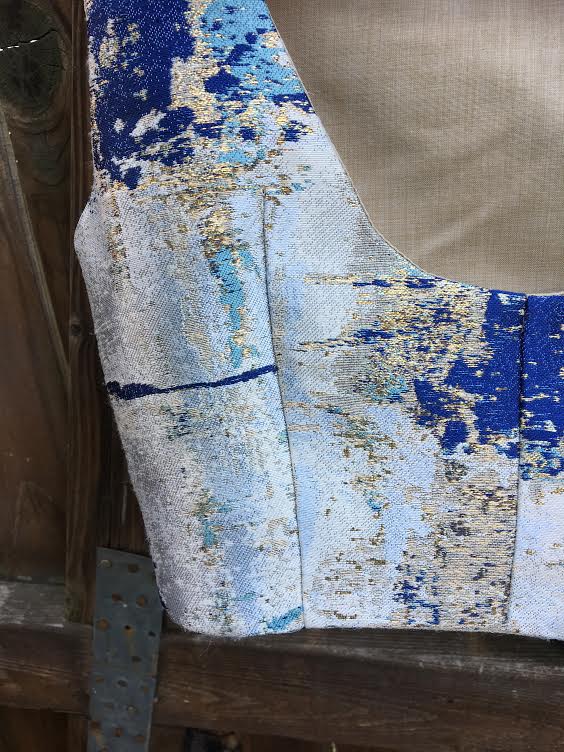
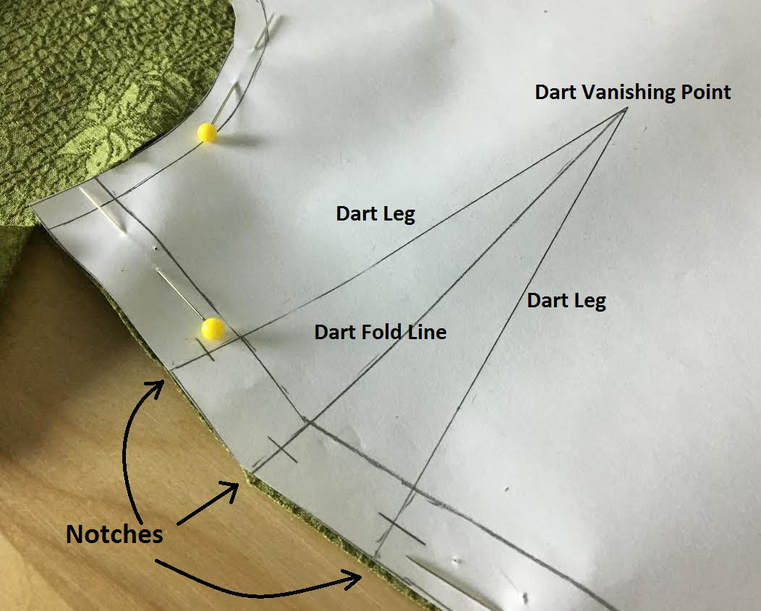
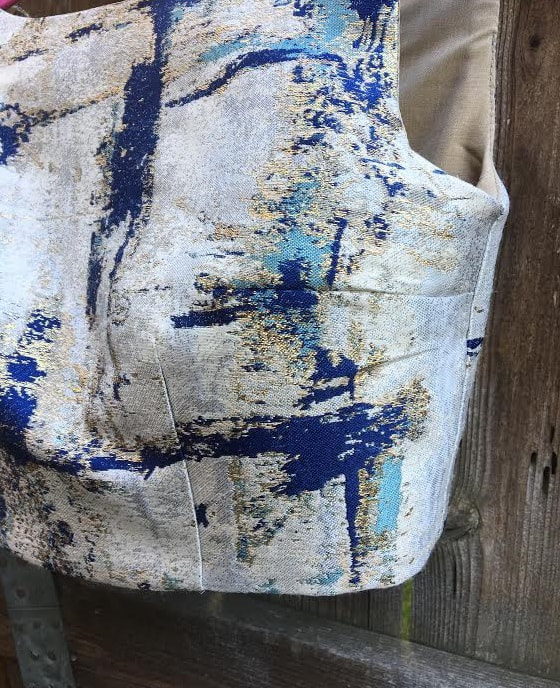
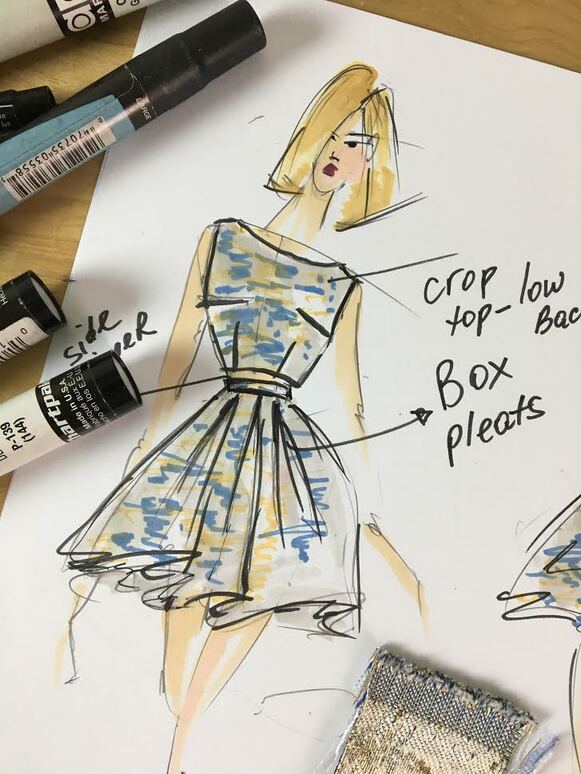


 RSS Feed
RSS Feed
